Maybe you’ve been 3D printing for a while now and you’ve gotten good at it. Now, you’re thinking: “Maybe I could really make money doing this?”
Well, don’t get too excited, there’s a lot of competition out there, but done right, yes, you could build a nice business for yourself doing something you enjoy, especially if you’re selling on Amazon.
Selling 3D printed products on Amazon can be a profitable venture but has risks and challenges. Sure, Amazon gives you access to millions of potential buyers but it will cost you to reach them. For every $50 item you sell, you may pay 40% to 50% in service fees and that’s before deducting your material and overhead costs.
If you do find that niche product or are the first out of the gate with the hottest trend, you’ll be on your way to a nicely profitable small business.
Let’s take a look at how it’s done.
What to Sell on Amazon
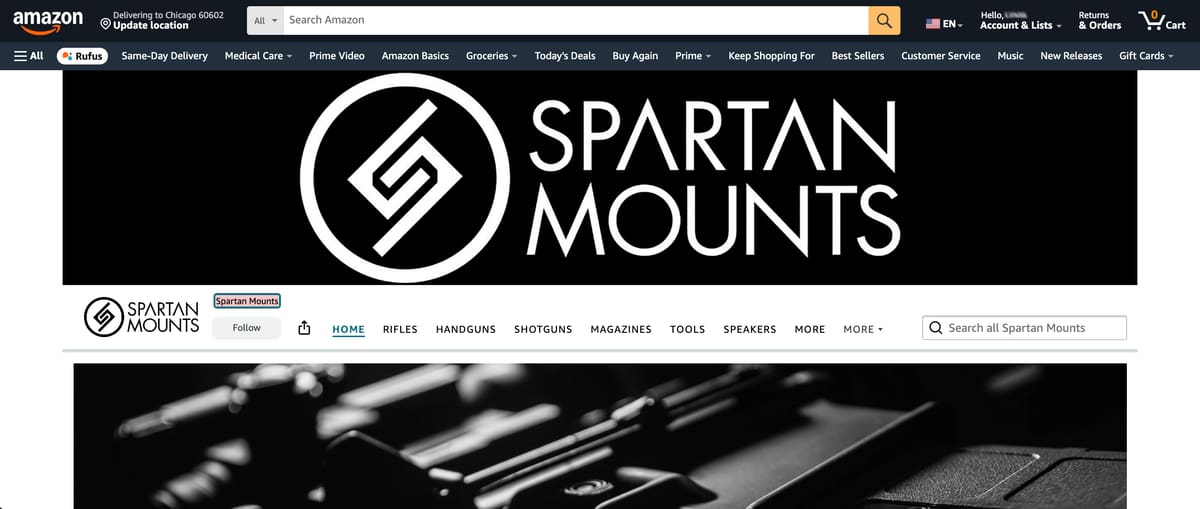
Coming up with what to sell is the hardest part of the entire process.
If your 3D printing strength is in 3D printing articulated dragons or smartphone holders from files that you downloaded from Thingiverse, that won’t translate well to a platform like Amazon. Successful 3D printed products there are, more or less unique. They’re custom-designed to suit a function, solve a problem, or offer an original decorative or fashion flare.
Plus, tastes change and demand fluctuates, so successful sellers know that an Amazon business will have peaks and valleys and require that you constantly adjust and develop new products. Fortunately, rapid adaptation is one attribute at which 3D printing excels.
To find product ideas, hundreds of strategists, websites, and Amazon product research tools online track what sells well on Amazon. Check out Amazon’s own list of best sellers per category, which is updated hourly. This is a great way to spark ideas and spot emerging trends.
Rather than evaluating if any of these best-selling products can be directly 3D printed, think about potential 3D printed components, complements, or accessories — think holders, organizers, storage, and tools — as potential products. These types of items tend to sell well because the demand is just low enough so that they’re too expensive for companies to injection mold — because of the high price of making molds and the minimum quantity required for that manufacturing method.
For existing 3D printed products on Amazon, read the reviews and comments to understand what else customers want or how you can improve upon the original (without infringing on someone else’s intellectual property).
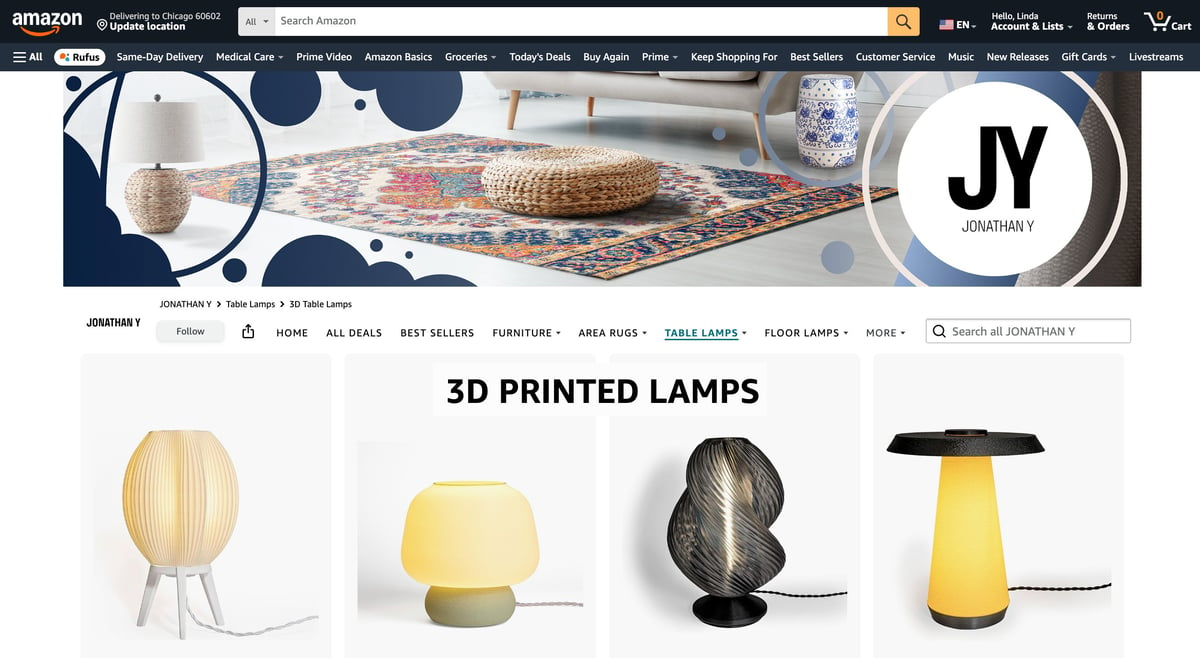
YouTube influencer, entrepreneur, and 3D print farmer Sam at SamCraft, who prints and sells accessories for laser engraving machines, says he’s often asked what people should sell. His response: “Don’t think of it as a thing people are going to want, think of it more as a solution to a problem (they have).”
Another powerful Amazon product research and seller tool called Jungle Scout exemplifies just how complex selling on Amazon can be. Subscriptions start at about $29 a month and with one you can find profitable product ideas, track sales, analyze the competition, optimize your product listing, find high-ranking keywords for your ads, and even forecast the inventory you’ll need to avoid shortages and overstocks. This and other tools also send automated requests for customer reviews, notify you of competitors’ price drops, and even suggest improvements to your products.
As you can see, there’s a lot more to successful selling on Amazon than printing and posting.
Successful 3D Printing Companies on Amazon

Let’s look at some products that have been popular on Amazon recently.
Current best sellers (Feb. 2025) in the Handmade section of Amazon include a 3D printed articulated dragon (touting that it’s made in the USA) for $23.99, a 3D printed cat butt cookie cutter for $10.99, 3D printed connectors for Hot Wheels Tracks for $7.99, and a 3D printed basketball shaped planter pot for $22.99.
Other category best sellers include a wide range of mounts and stands for very specific things. For example, this 3D printed headphone charging stand for a Logitech G733 Lightspeed Wireless Gaming Headset and this 3D printed wall mount for a JBL Flip 5 Speaker. The latter is offered by a company called Spartan Mounts which has attained the coveted “Amazon’s Choice” label and acquired more than 400 customer reviews for this popular wall mount. The company sells several other products that enable you to wall-mount very specific things. We also found this 3D printed Orbital Sander Wall Mount by The Mountain Maker going for $17.99.
Costumes (or cosplay) is another popular category on Amazon since trends change often. For example, the BeamTeam3D Store sells 3D printed ear and horn attachments for headphones for $15.99.
There are quite a few 3D printed lamps on Amazon from shops including the Dawnwake Store, Secowel, and Olee Odee.
What You Can’t Sell on Amazon
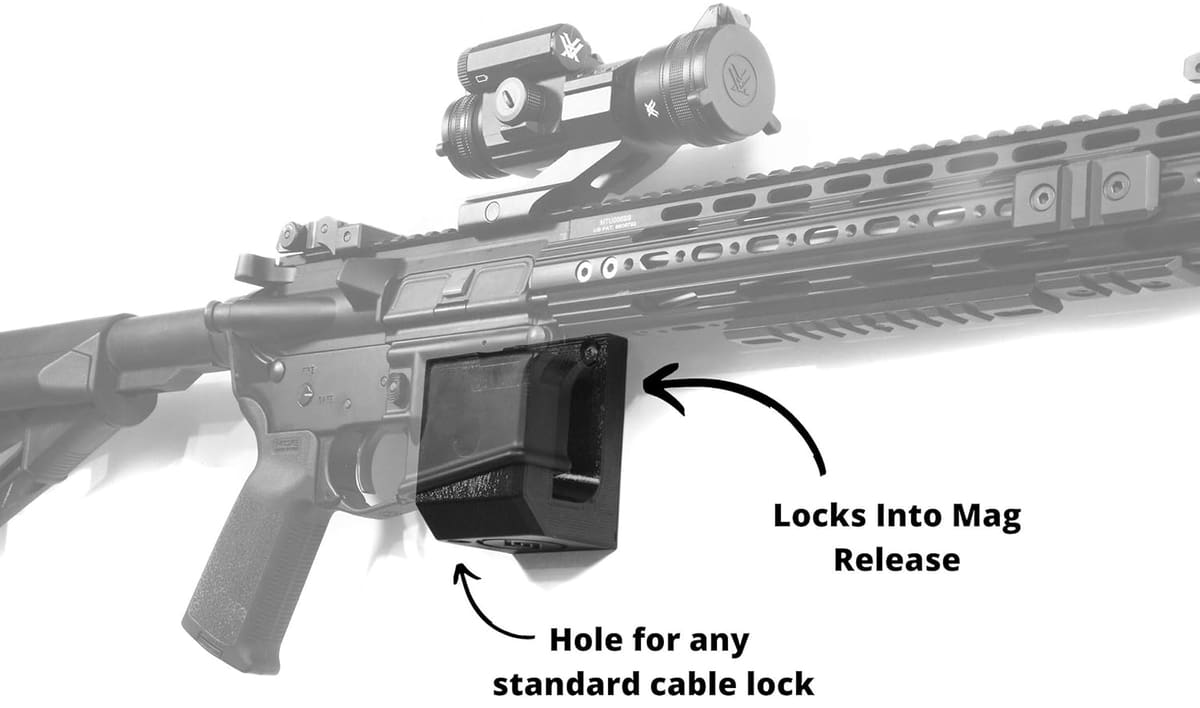
Now is a good time to mention what you can’t sell on Amazon. These rules apply to 3D printed and otherwise manufactured items. The first one, obviously, guns regardless of whether they function or not, so just don’t go there. In fact, you must comply with all federal, state, and local laws applicable to your products and product listings, including existing laws on misrepresentation and counterfeiting.
The next category of do-not-print is anything that infringes on another company’s intellectual property. For example, you can’t sell Mickey Mouse figurines because the likeness of Mickey Mouse is the intellectual property of Disney.
Also under this category are replicas of things already for sale on Amazon. The platform scans new products against existing products and if yours is too close it could be denied. That company that you stole the idea from could also complain to Amazon putting your entire store at risk.
If you’re not using your own originally designed digital model file, watch out for copyright on the digital file. Nearly all files downloaded from model repositories like Thingiverse have copyrights attached and most prohibit selling the items that you print from the file.
Also, shy away from 3D printed products for food or skin contact. These can require certifications so it’s best to just avoid them.
Amazon Benefits Over Etsy, eBay
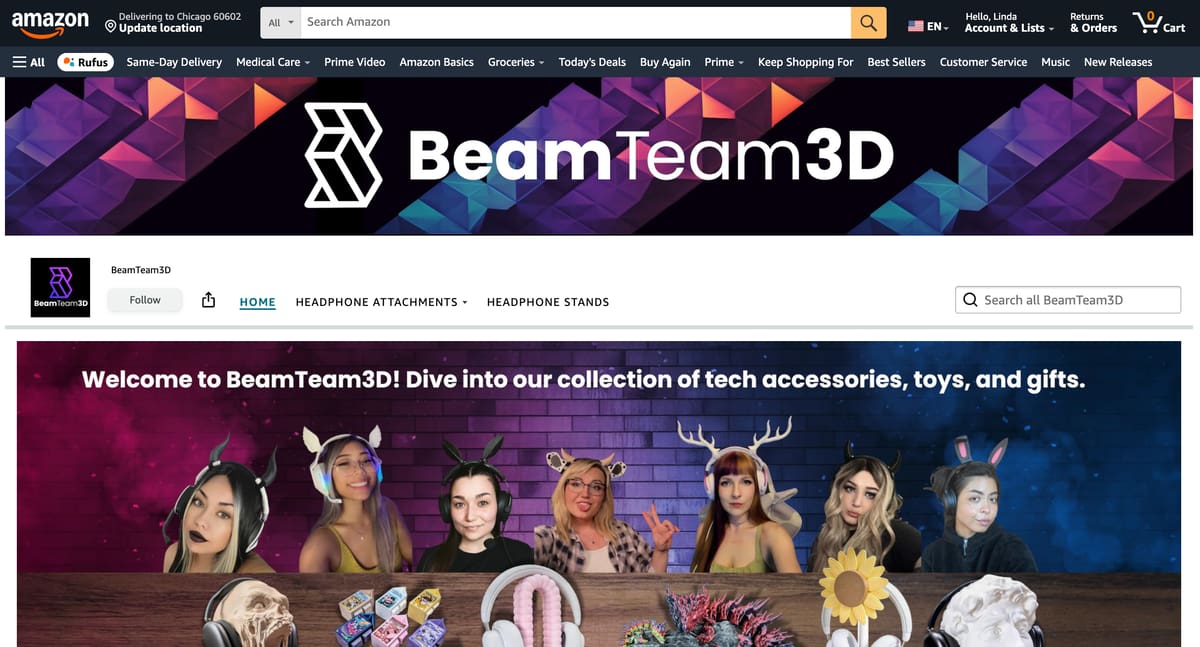
There are other e-commerce platforms for your 3D printed items, such as eBay and Etsy, but Amazon offers unique features that help you boost sales and even protect your product design and IP.
Amazon wants you to succeed so it provides a lot of tools. You can go through Seller University to master all the tools, processes, and opportunities with videos and downloadable guides that span more than 125 topics across Amazon’s global stores.
There’s also a new “New Seller Guide” that details a range of promotional services Amazon offers to new sellers to ensure their success.
One Amazon feature that is particularly important to 3D printing entrepreneurs is the Amazon Brand Registry. This paid service is a suite of benefits designed to, among other things, safeguard your intellectual property. Amazon says it proactively blocks or flags new product listings that are suspected of infringing on existing products’ IP.
Amazon has another tool called Vine that helps you generate customer reviews. You provide free units to Amazon-trusted reviewers who will then upload a product review — because we all know people buy products that other people recommend.
Amazon also offers a fulfillment program, meaning they ship the products to customers for you and manage any returns. Fulfillment by Amazon (FBA) is accessible when you sign up for an Amazon selling account but is optional if you want to pack and ship products to customers yourself. Of course, FBA saves you a lot of hassle, but does charge a percentage fee of your sale price (starting at about 15% depending on product weight and size) and there can be additional fees for product storage, so factor that into your product price. You can even use it for shipping products not sold through Amazon.com (“Multi-Channel Fulfillment Units“). You pay to ship your product to Amazon’s distribution hub and they pretty much handle the rest.
There are many ways to boost and advertise your product on Amazon that you pay for and we won’t get into them here since the programs update often, but know that some investment in advertising your product on Amazon is often necessary for it to be found. One example is the Sponsored Products advertising service. For this, you choose which products you want to advertise, assign keywords to those products (e.g. “speaker mount”), and enter a cost-per-click bid. When an Amazon shopper searches for one of your keywords, your ad is eligible for display alongside the search results. You pay a fee when a shopper clicks your ad, at which point, the shopper is taken to the detail page where your offer is listed.
“When I listed my first product on Amazon, I thought it wasn’t going to be the right fit for 3D printed items, but I was proven wrong,” says seller The Mountain Maker, who designed a mount for an orbital sander and a dumbbell business dard holder. “I wasn’t expecting more than a few sales, but in my first three months on Amazon, I had one product listed that had over 100 sales.”
Don’t Say It’s 3D Printed, or Do
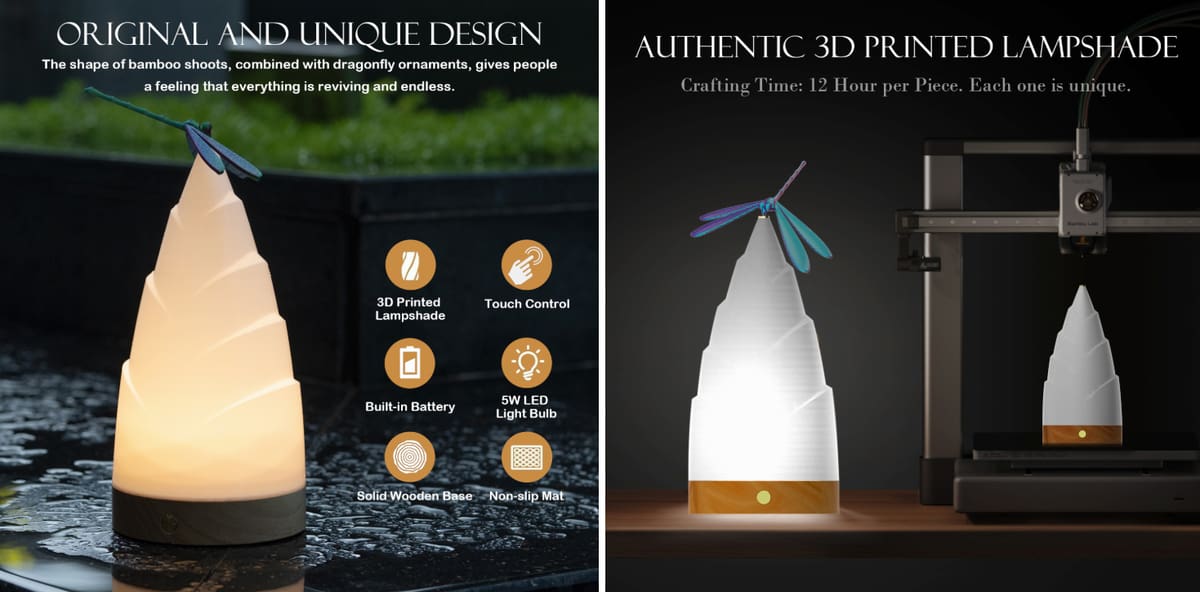
How you describe your product is essential on Amazon and a critical part of your sales strategy. Some companies tell a full back story highlighting their love of 3D printing, while others tout the sustainability of PLA, or the small-town roots of their business. Some companies don’t mention 3D printing at all.
Whether or not mentioning that your product is actually 3D printed is a personal choice. You have to ask yourself if your audience will think 3D printing is innovative and cool or if they will think it’s low-quality and cheap. It could go either way. You don’t have to tell the customer how the part is manufactured — you won’t see Black & Decker say its drill body is injection molded. Yet if the customer’s expectation is for injection molded parts and yours have a lot of the typical flaws of 3D printing, you risk returns and negative reviews.
Home accessory brand Jonathan Y, for example, sells a 3D printed table lamp ($99) via Amazon and touts that it’s 3D printed and made from PLA. Customer reviews of the item are mixed with some noting that the plastic seems fragile or arrived broken.
Accessory brand Spartan Mounts says its product mounts are “3D printed from scratch-resistant PETG plastic”. One reviewer said: “I was concerned at first being that the mount is 3D printed but it’s so far exceeded my expectations” while another said: “Looks like it was done at home on someone’s 3D printer. Really rough around the edges. I just expected a little more for the $19.13 that I spent.”
As an entrepreneur, you have an opportunity to change minds about the quality of 3D printing for end-use products or confirm buyers’ worst suspicions.
If you’re offering a product you know has some, let’s say, flaws, you can lean into that and call it uniquenesses (as long as they don’t impact that functionality or stated application). Amazon has a category of products under Amazon Handmade. This is a special marketplace within Amazon designed for artisans and small businesses to sell handmade and handcrafted products where the expectation is that they will have some hand-crafted features. 3D printed products do qualify, but sellers are individually approved so you’ll need to detail what’s “handmade” about your product such as the original digital design or any unique post-processing.
The advantage of getting into the Handmade section is greater visibility for your item since it’s a special subsection that customers go to looking for unique or custom products that may have a few flaws (think printing seams or irregular layer lines) that are parts of its “charm.”
You’ll find several articulated dragons in the Handmade section from companies all around the world like Subpoly, which has been selling them since 2016. They’ve pretty much locked up the category on Amazon since the platform seeks to remove duplicate items.
How to Register As a Seller On Amazon

It may come as a surprise, but as long as you follow Amazon’s policies, you can sell pretty much whatever you want. Registering yourself as an Amazon seller is easy and you don’t have to technically own a business. Of course, it’s not free. You can choose either the Individual plan that charges $0.99 per items sold or the Professional plan for $39,99 a month. On top, there’s a percentage of each sale based on the product category ranging from 8% to 20%.
Amazon Fees For Sellers
To register, go to the Seller Central hub on Amazon and click on Sign Up. You can login with your existing Amazon account that you use to purchase stuff or create a new account for your business.
Amazon will ask you what kind of business you have. You can select options ranging from “Publicly listed business” to “Individual (I don’t have a registered business)”.
If you haven’t yet registered yourself as a business in your city or state, you can’t select “privately-owned business” and instead will need to select “Individual”, which, according to Amazon means you “sells in a private context. An individual does not sell a product to a company / charity and does not operate in a business or professional context.”
Next you’ll need to provide Amazon with a valid government-issued ID, recent bank account or credit card statements, a chargeable credit or debit card (for the fees), and a mobile phone number. Once you click “Continue” you’re agreeing to Amazon’s terms and conditions, which govern everything you can say, post, and sell on the platform so it’s worth it to peruse these in advance.
Once you’ve been approved, you have access to your own Amazon dashboard where you enter your product information, descriptions, photos, shipping, and a lot more to help you keep track of your products. If you want to see the Amazon backend in action, check out a great step-by-step video on YouTube by Amazon seller and 3D printing entrepreneur The Mountain Maker.
Print Your Products To Look Professional

Although Amazon may not be synonymous with quality, don’t underestimate customer expectations. Customers likely expect injection-molding quality when it comes to any plastic product, which is something a thin wall of PLA just can’t produce.
You may not need to stress over layer lines if you’ve informed buyers that your parts are 3D printed and have very clear product photography since many consumers consider them a feature. But aim for perfect prints, meaning no overly noticeable support removal scars, no extrusion blips or errors, no stringing. Few 3D printed parts will go directly from the print bed to the packaging. Plan to spend time on inspection and then post-processing to a level you think your customers will require. Returns can sink your business, especially on Amazon where the company takes a fee for handling every return.
If you don’t have the skills, printers, or desire to produce top-quality parts read on to the section below on using a 3D printing service.
Use a 3D Printing Service and Designers

If you enjoy 3D printing then this endeavor is a good fit for you because you may be in front of your printers a lot if sales go well. Of course, you don’t even need to have a 3D printer to sell these items on Amazon, with the exception of the Handmade section. You could use a service, like Craftcloud.
Once you calculate the cost of your consumables, your failed prints, your energy, and, of course, your time, and come up with how much you need to sell your product for, shop around for some estimates at printing services and compare.
It’s also a good idea to have a service you can trust in your back pocket in case your orders spike to more than you can deliver in a reasonable amount of time.
If you have a great idea for a product you think will sell but don’t have the skills to design a 3D printable digital file from scratch, hire a designer.
Many of the top 3D printing services offer some type of design service, from a basic “fixing” of your STL file to working with you to design a new product from scratch.
There are also a lot of talented CAD designers out there offering their services on freelance or gig platforms, such as Fiverr, Upwork, and Guru, costing anywhere from $10 to $100 or more, depending on the complexity of your part.
Do You Have a Successful Amazon Business?
Tell us about it in the comments!
License: The text of "How To Sell Your 3D Prints on Amazon" by All3DP Pro is licensed under a Creative Commons Attribution 4.0 International License.



